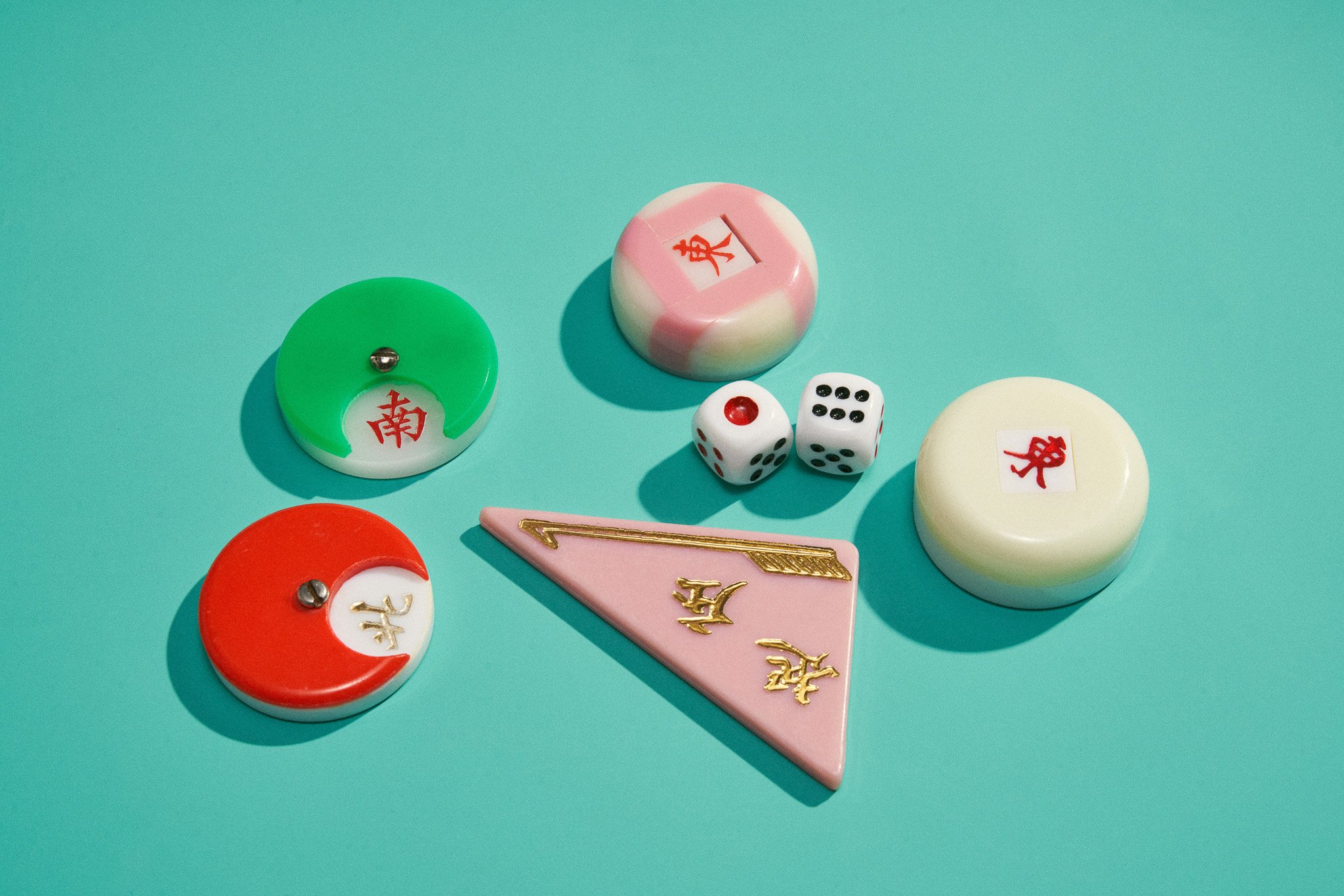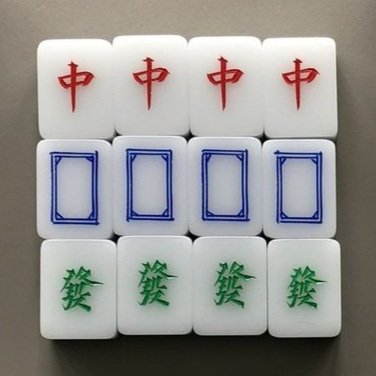
HOW TO PLAY
The delightfully tactile nature of mahjong tiles is a huge part of its appeal, but it can also make the game feel unfamiliar or intimidating. The trick is to just think of the tiles like a deck of cards: there are three suits numbered 1 to 9 (characters, circles, bamboo), as well as higher-value cards (winds and dragons). There are also separate game pieces that help you keep track of whose turn it is, and to tally up your score.
The Tiles
4x bamboo tiles (numbered 1-9)
4x characters tiles (numbered 1-9)
4x circles tiles (numbered 1-9)
4x four winds (E, S, W, N)
4x three dragons (red, white, green)
136 tiles total
Bamboo
Also known as:
Sticks
Characters
Also known as:
Numbers, Thousands, Words
Circles
Also known as:
Dots, Stones, Wheels, Cookies
Winds
Wind tiles are named for each cardinal direction: East, South, West and North, and may add value to a player’s hand depending on which wind round is being played and in which position the player is seated.
Dragons
Dragon tiles also add value to a player’s hand but are not dependent on the wind round or player position. Named red, white or green dragons, and may also be known as Arrows.
Flowers
The Flower tiles (also known as Seasons) are optional to use and in my family’s house rules were always left out. They are used to heighten the gambling stakes of the game.
The Accessories
Dice
Two dice are thrown to determine the first banker and the starting point in the wall of each hand.
Wind Disc
Also known as the jongg, the wind disc is used to keep track of what round is being played. It will be passed from player to player counter-clockwise as they take turns being the banker. The character displayed changes along with each round.
Chips
Each player gets an assortment of chips to keep track of their score. If you’re playing for money, these chips can be converted to cold hard cash at the end of the game. (See “Playing for Money” section below.)
The Stakes
Scores are tabulated and chips are exchanged at the end of every hand. If you don’t have chips, it’s possible (though considerably more difficult) to keep track with a pen and paper. You can also simplify by just keeping tally of the number of hands each person wins. But, I’ll say there’s a special joy in exchanging chips with your fellow players at the end of every hand, especially if you’re the one collecting.
Each player starts with chips worth 2,000 points total:
10 chips worth 10 points each = 100 points
4 chips worth 100 points each = 400 points
3 chips worth 500 points each = 1500 points
* Note: The color of the chip doesn’t matter, so long as you establish at the start of the game what is what!
Playing for Money
Since chips are exchanged throughout the game, you only really touch cash at the end of the night. You can keep track of whether you are up or down by thinking, “am I up or down from the number of chips I started with?” When the game is over, cash usually ends up getting forked over from the player with the least chips to the player with the most, with the other two players often ending up somewhere close to their buy-in.
*In my family’s house rules, IOUs are an acceptable way to buy back in if you lose all your chips mid-game!
** It’s also worth noting that some people skip chips all together, and play by exchanging real $$ coins and dollars throughout the game!
Just for fun
$10 buy-in
1/2 a cent per point ($.005)
Game Night
$20 buy-in
1 cent per point ($.01)
Special Occasion
$40 buy-in
2 cents per point ($.02)
High Roller
$100 buy in
5 cents per point ($.05)










